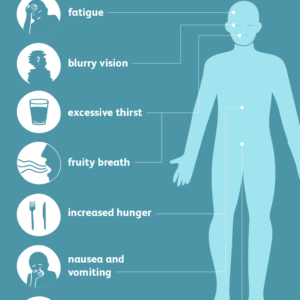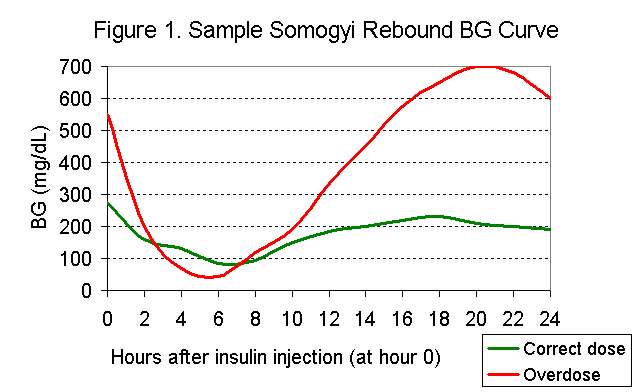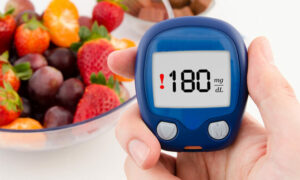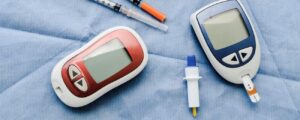Contents
- 1 Dawn Phenomenon
- 2 Symptoms of Dawn Phenomenon
- 3 Causes of Dawn Phenomenon
- 4 Does It Occur Only In People With Diabetes?
- 5 Complications of Dawn Phenomenon
- 6 Somogyi Effect
- 7 Prevention of Dawn Phenomenon
- 8 Home Remedies For Dawn Phenomenon
- 9 Diagnosis of Dawn Phenomenon
- 10 Treatment of Dawn phenomenon
- 11 Is The Dawn Phenomenon Something I Must Fix?
- 12 A Word From MantraCare
Dawn Phenomenon
The dawn phenomenon, also known as the ‘Dawn effect’ is an effect on the diabetic patient. We all get through many hormonal changes in the whole day. Moreover, this condition is quite similar in diabetics. Our body releases some hormones that increase blood sugar and can not be controlled due to a lack of insulin.
The dawn phenomenon may be a natural rise in blood glucose that happens within the early morning hours. The shift in blood glucose levels happens as a result of hormonal changes within the body.
Everyone experiences the dawn phenomenon to some extent, but most people don’t notice it because their insulin response naturally makes the required adjustments. In a person with diabetes, this might not happen. The person is more likely to experience a greater increase in blood sugar levels and the symptoms resulting from this.
![Figure, Dawn phenomenon. Image courtesy S Bhimji MD] - StatPearls - NCBI Bookshelf](https://mantracare.org/wp-content/uploads/2021/07/Dawn__phenomenon-1.jpg)
Symptoms of Dawn Phenomenon
The dawn phenomenon refers to an increase in blood glucose released by the liver. The discharge happens because the person’s body is preparing to provide energy for the next day. The body normally uses insulin to deal with this rise in blood glucose. The body of an individual with diabetes doesn’t produce enough insulin. There are chances that they are unable to use the insulin properly.
As a result, the person will feel the consequences of getting high sugar levels within the blood.
These effects can include:

- Nausea
- Vomiting
- Blurred vision
- Weakness
- Disorientation
- Feeling tired
- Extreme thirst
- Dizziness
Causes of Dawn Phenomenon
The “dawn effect” has earned its name from the recurrence of elevated blood sugar around the hours of waking, roughly between 4-8 AM. Although the precise underlying causes of the dawn phenomenon are still unclear, it’s known that hormones, including adrenaline, cortisol, glucagon, and somatotropin, play an outsized part.
However, These hormones follow a biological time, or a daily cycle, and have a tendency to be found in higher concentrations within the blood during the morning to try to prepare us for the day ahead. The hormones that regulate glucose release into the blood include:
- Adrenaline: Referred to as the “fight or flight” hormone, adrenaline increases blood flow to the muscles and promotes the discharge of glucose into the blood.
- Cortisol: Referred to as the “stress hormone”, also plays a part in increasing blood sugar.
- Growth Hormone: It is important for repair and regeneration and promotes the discharge of glucose into the blood.
- Glucagon: It signals the liver to release glucose/sugar into the blood.
Two key processes occur within the liver overnight that ends in the discharge of glucose into the bloodstream and contribute to increased morning blood glucose:
- Glycogenolysis– The breakdown and release of stored glucose/glycogen.

- Gluconeogenesis– The creation of glucose from components of protein, i.e., certain amino acids or fat, i.e., glycerol
One more hormone that plays a crucial role in the process is insulin. When blood sugar rises, insulin is released and helps move glucose out of the blood and into cells for energy use or storage.
Does It Occur Only In People With Diabetes?
The physiological processes that underlie the dawn phenomenon occur in everyone irrespective of their medical condition. The difference lies with insulin and the way our bodies react to it. Healthy individuals secrete enough insulin and are insulin-sensitive enough to counteract an increase in morning blood sugar.
However, when someone with prediabetes or type 2 diabetes is insulin-resistant, he does not secrete enough insulin. As a result, it allows blood sugar to rise. This might be further compounded within the early morning hours because our body is more insulin-resistant as compared to the remaining day. Progression of prediabetes and sort 2 diabetes is probably going to result in worsening of the dawn phenomenon.
Is It Different For Type 1 And Type 2 Diabetes?
Differences in intensity depend more upon the person who deals with it. It has nothing to do with the type of diabetes the person has or its treatment plan.
A person with type 1 diabetes or type 2 diabetes who uses insulin may have to regulate the dosage of insulin to account for any changes overnight. An individual who wears an insulin pump can adjust the pump to deliver extra insulin in the morning.
Complications of Dawn Phenomenon
People who experience the dawn phenomenon regularly should consult their doctor. If blood glucose levels spike too high as a result of the dawn phenomenon, the consequences may differ. These consequences can range from mild to life-threatening medical emergencies.
Moreover, a person with very high blood glucose levels can develop ketoacidosis. It is a dangerous build-up of acid within the bloodstream. They may lose consciousness and experience Kussmaul’s coma. If the person starts to possess severe symptoms, someone should call the emergency services.

Some long-term complications of high blood glucose are:
- Cardiovascular problems and risk of heart attack or stroke
- Nerve damage, with wide-ranging consequences
- Vision loss
- Organ damage
The NIDDK recommends calling a doctor if blood sugar is high, quite 3 times in 2 weeks. If an individual has high blood glucose in the morning, especially between 2 am and 8 am, the reason can be the dawn phenomenon. They can ask their doctor about the changes required in the quantity of insulin or other medications.
Somogyi Effect

The Somogyi effect is another possible explanation for high blood glucose in the morning hours. Not all scientists agree that this effect is real. However, some scientists say that it happens when blood glucose levels dropdown.
For example, if an individual who takes insulin or medication to lower blood glucose levels doesn’t eat a daily bedtime snack, or if they take an excessive amount of insulin, their blood glucose levels may drop during the night. This person’s body then responds by releasing growth hormones that trigger sugar levels to rise. This might cause blood glucose levels to be above normal within the morning.
The Somogyi effect is typically a symbol of poor diabetes management.
Difference Between Dawn Phenomenon And Somogyi Effect
The main difference between the dawn phenomenon and the Somogyi effect is that the latter includes a decrease in glucose levels- hypoglycemia– followed by rebound hyperglycemia.
The easiest way to rule out the Somogyi effect is to see blood glucose levels at bedtime, around 2 a.m. to 3 a.m., and after waking up. The person should do that for several nights and mornings.
Some people may prefer wearing endless glucose monitors, which may record the sugar levels throughout the day and night, allowing the user to trace the trends. Here are two possible results and their explanations:
- If the blood glucose level is low at or between 2 a.m. to 3 a.m., there’s an honest witness of the Somogyi effect.
- If the blood glucose level is normal or high at or between 2 a.m. to 3 a.m., then the cause is the dawn phenomenon.
Prevention of Dawn Phenomenon
Managing blood glucose levels is vital for people with diabetes. A person whose blood glucose levels are regularly over 180 mg/dl should seek medical help. Ignoring it may cause further complications.
A combination of diet, exercise, and medicines can often help keep the symptoms in check and prevent complications. In the case of the dawn phenomenon, some additional changes may help prevent problems arising from the spike in blood glucose.
Some steps that people with diabetes should follow to manage the dawn phenomenon include:
- Talking to a doctor about changing or adjusting their medication
- Eating regular meals
- Taking all their medication doses
- Avoiding carbohydrates around bedtime
- Taking medication closer to bedtime instead of at supper time
- Eating dinner earlier in the evening
- Doing some light physical activity after dinner, like going for a walk, jogging, or yoga
If blood glucose levels are high from time to time, this is often not too worrisome. However, if it occurs regularly, the person should speak to a doctor.
Home Remedies For Dawn Phenomenon

Some common home remedies or lifestyle changes that will reduce the danger of high blood glucose in the morning include:
- Increasing the protein-to-carb ratio of any evening snacks
- Get a sound sleep- six to eight hours each night and try to sleep before midnight to help decrease cortisol and improve one’s ability to tolerate glucose.
- Reduce your overall carbohydrate intake- Always with medical supervision to lower blood sugar.
- Eat dinner early in the evening and avoid late-night snacks to cut back blood sugar in the evening.
- Have your last meal of the day that contains the smallest amount of carbohydrates to compensate for the increase in blood sugar.
- Do some physical activity after dinner, like a walk, to keep the blood sugar lower.
- Eat breakfast that is lower in carbohydrates since blood sugar is high and you’ve got greater insulin resistance within the morning.
- Don’t wait too long to eat breakfast after you wake up. Eating food early in the morning can help release insulin which may lower blood sugar.
- Doing more activity in the evening.
- Eating breakfast, albeit there’s high blood glucose, might stop the assembly of contributing hormones
- The National Institute for Diabetes and Digestive and Kidney Diseases (NIDDK) suggests the subsequent meals if an individual finds they need high blood glucose levels: Drinking an outsized glass of water, going for a walk
People with diabetes should speak to their doctor before trying any home remedies or stopping their medications.
If the dawn phenomenon occurs regularly, people with diabetes should seek advice from a doctor for the simplest options to assist prevent the intense consequences of high blood glucose levels. Regular blood glucose spikes can increase the danger of complications of diabetes.
Diagnosis of Dawn Phenomenon

You would like to know if elevated morning blood sugar numbers are a result of the dawn phenomenon or not. To check this, all you will have to do is test it multiple times throughout the day.
First and foremost, you ought to know what your fasting glucose seems like. Whether it’s your most up-to-date lab values from the doctor or checking your glucose with a meter, the simplest way to know where your fasting glucose falls is to test it on a couple of different days.
Similarly, testing your glucose throughout the day, before and after meals, and before you go to sleep can make you understand how your body responds to the food you eat.
Once you’ve tested enough that you simply understand your baseline glucose along with your current habits, try incorporating each of the strategies outlined below into your routine. Continue testing your blood sugar and you’ll see what impact each change has on your morning fasting glucose.
Treatment of Dawn phenomenon
The person may need to adjust their insulin dose. Treatment for the dawn phenomenon is probably going to be equivalent to a treatment for a spike in blood glucose. This may involve:
- Injecting insulin
- Using specific medication to focus on increases in blood glucose
Each person with diabetes should ask their doctor what to try when their blood glucose levels spike, whether they have the dawn phenomenon or not.
If an individual often experiences high blood glucose within the morning, a doctor may suggest changing the treatment plan or adjusting the dose of insulin or medication.
Is The Dawn Phenomenon Something I Must Fix?
The dawn phenomenon isn’t necessarily something that must be fixed. It’s important to know that albeit your elevated fasting glucose, you’ll have lower or normal glucose levels throughout the day.
Additionally, it’s not uncommon for patients reversing their diabetes through nutritional ketosis to experience the dawn phenomenon and still see improvements in their HbA1c. That happens because HbA1c may be a measure of your blood sugar over the last 3 months. This average blood sugar level matters more than any individual blood sugar level.
A Word From MantraCare
Do you want to get rid of diabetes? Join our online diabetes consultation program and reverse your Diabetes naturally through lifestyle changes such as a Personalized Diet plan, Exercise, dieticians, and health coaches.



